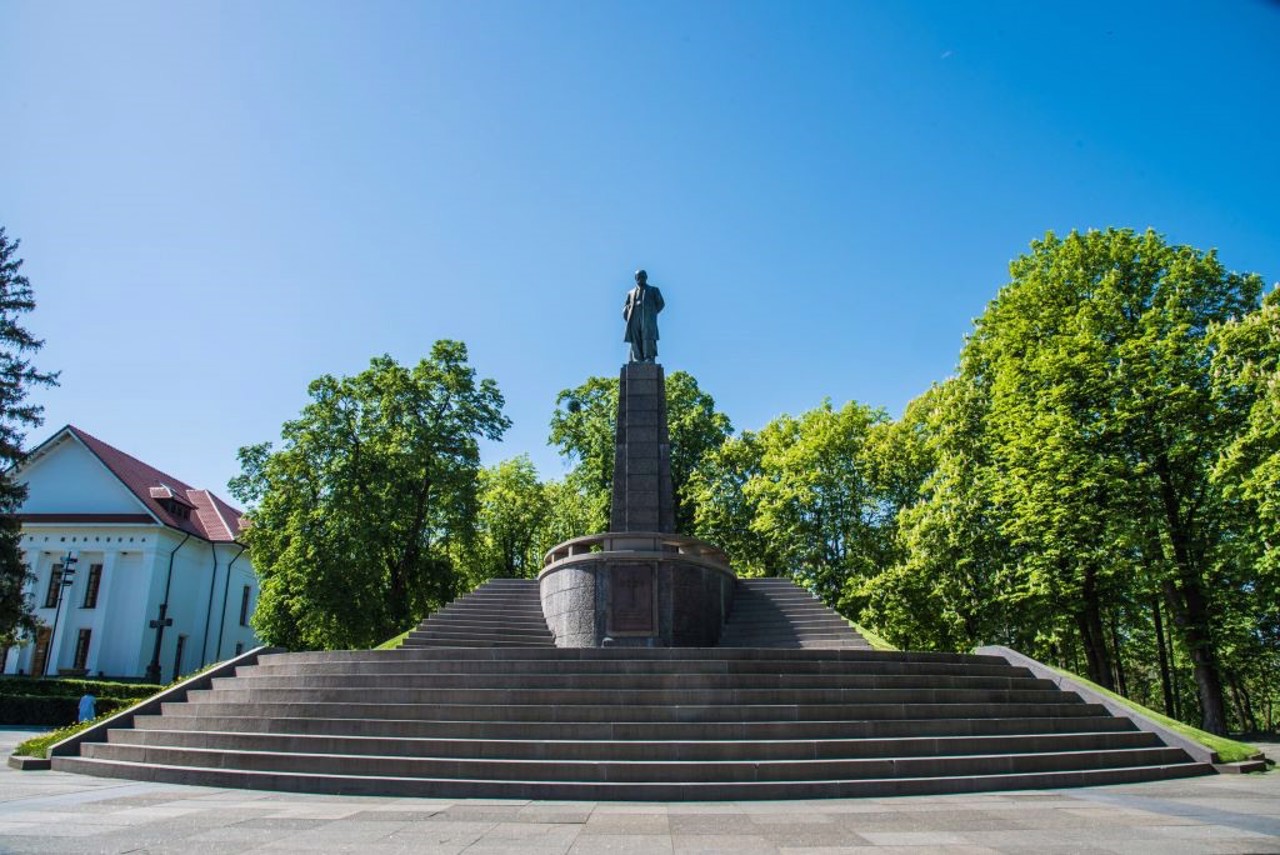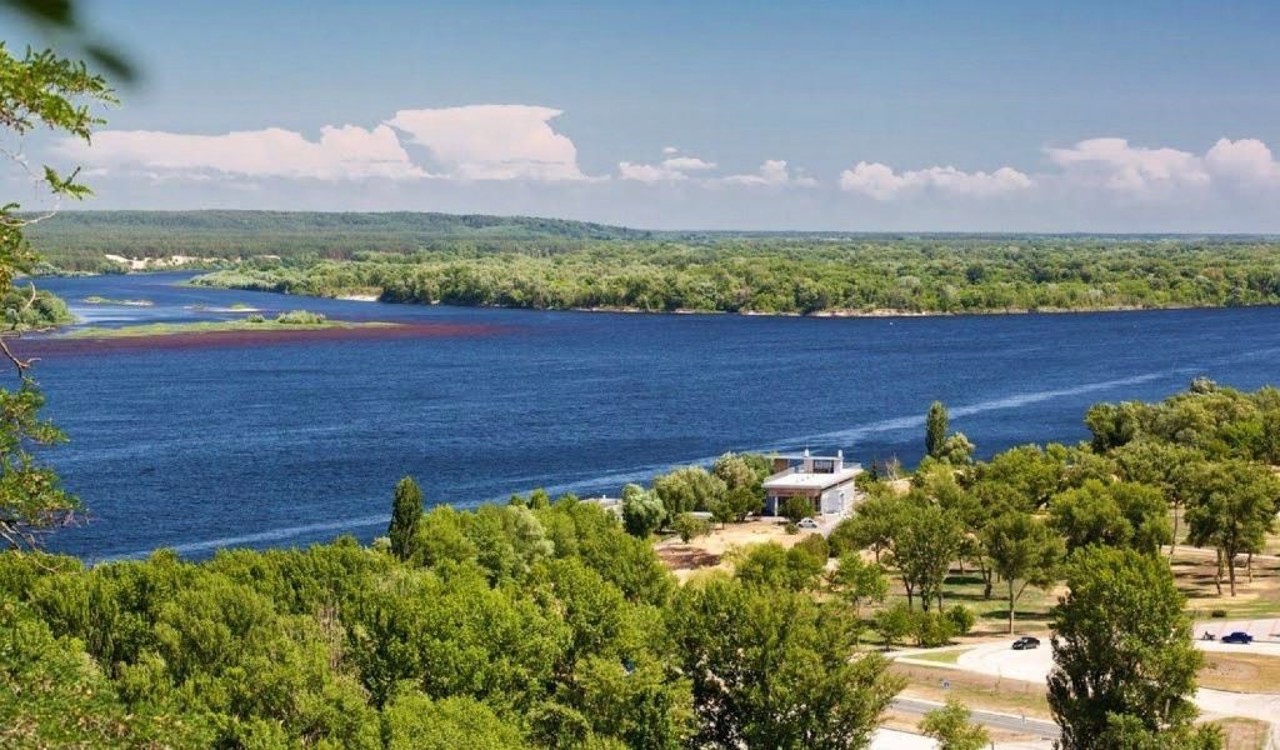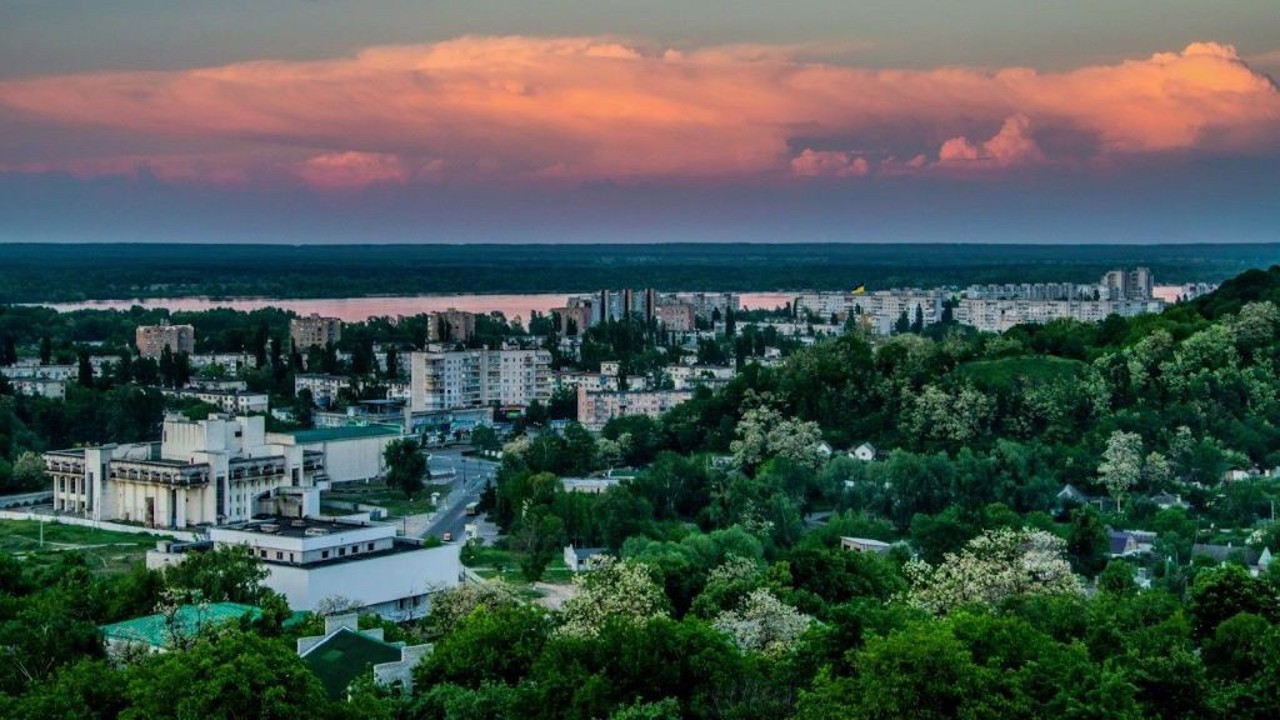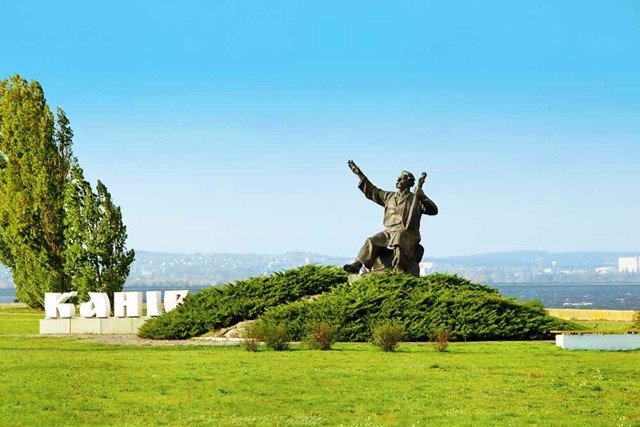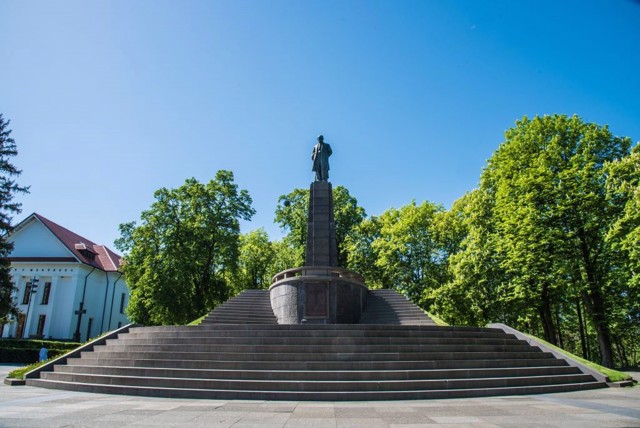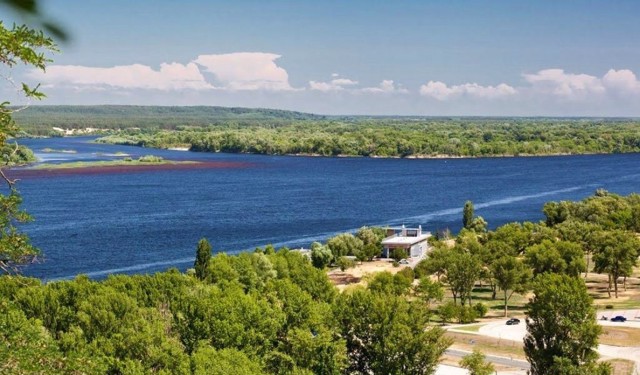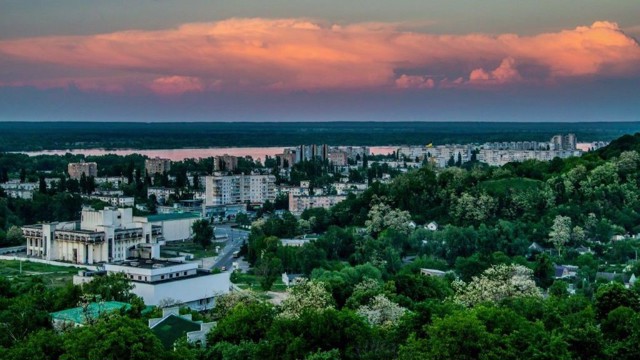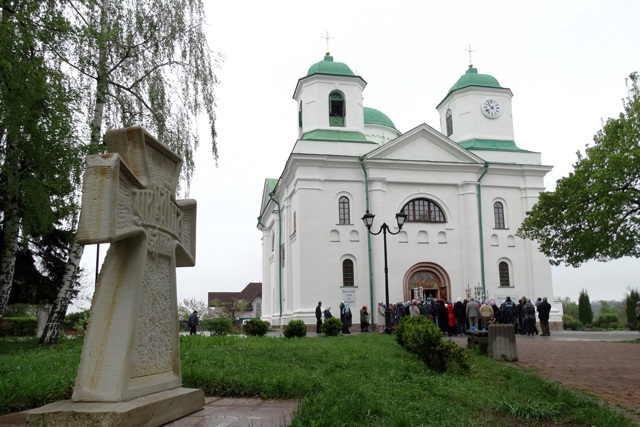Functional temporarily unavailable
General information about Kaniv
The ancient city of Kaniv is located on the high right bank of the Dnipro, in the place where the river has its original channel.
Probably, the city appeared in the 11th century as a transshipment point near the regular crossing of the Dnipro. It was first mentioned in the annals in 1144, when Prince Vsevolod of Kyiv founded the Church of Saint George, later renamed the Dormition Cathedral.
Now Kaniv is better known thanks to the Shevchenko National Reserve "Tarasova Gora". Taras Shevchenko wanted to settle in this picturesque place towards the end of his life, but he did not have time to carry out his plan. Only after his death in 1861, according to his will, were his remains transported from St. Petersburg and buried on Chernecha (now Tarasova) Hill. Later, a mem ...
The ancient city of Kaniv is located on the high right bank of the Dnipro, in the place where the river has its original channel.
Probably, the city appeared in the 11th century as a transshipment point near the regular crossing of the Dnipro. It was first mentioned in the annals in 1144, when Prince Vsevolod of Kyiv founded the Church of Saint George, later renamed the Dormition Cathedral.
Now Kaniv is better known thanks to the Shevchenko National Reserve "Tarasova Gora". Taras Shevchenko wanted to settle in this picturesque place towards the end of his life, but he did not have time to carry out his plan. Only after his death in 1861, according to his will, were his remains transported from St. Petersburg and buried on Chernecha (now Tarasova) Hill. Later, a memorial complex was created, which attracts Ukrainians from all over the world not only with the memory of the outstanding poet-prophet, but also with the wonderful Dnipro landscapes.
The Kanivska HPP dam (444 MW) has been an integral part of the panorama since 1972.
Стародавнє місто Канів розташоване на високому правому березі Дніпра, в місці, де річка має первісне русло.
Ймовірно, місто з'явилося в XI столітті як перевалочний пункт біля регулярної переправи через Дніпро. Вперше згадується в літописі у 1144 році, коли київський князь Всеволод заснував церкву Святого Георгія, перейменовану згодом в Успенський собор.
Зараз Канів більше відомий завдяки Шевченківському національному заповіднику "Тарасова гора". У цьому мальовничому місці Тарас Шевченко хотів оселитися під кінець життя, однак не встиг здійснити свій план. Тільки після смерті в 1861 році його останки, згідно із заповітом, перевезли із Санкт-Петербурга та поховали на Чернечій (нині Тарасовій) горі. Пізніше був створений меморіальний комплекс, який приваблює украї ...
Стародавнє місто Канів розташоване на високому правому березі Дніпра, в місці, де річка має первісне русло.
Ймовірно, місто з'явилося в XI столітті як перевалочний пункт біля регулярної переправи через Дніпро. Вперше згадується в літописі у 1144 році, коли київський князь Всеволод заснував церкву Святого Георгія, перейменовану згодом в Успенський собор.
Зараз Канів більше відомий завдяки Шевченківському національному заповіднику "Тарасова гора". У цьому мальовничому місці Тарас Шевченко хотів оселитися під кінець життя, однак не встиг здійснити свій план. Тільки після смерті в 1861 році його останки, згідно із заповітом, перевезли із Санкт-Петербурга та поховали на Чернечій (нині Тарасовій) горі. Пізніше був створений меморіальний комплекс, який приваблює українців з усього світу не тільки пам'яттю про видатного поета-пророка, але й чудовими дніпровськими краєвидами.
Невід'ємною частиною панорами з 1972 року є гребля Канівської ГЕС (444 МВт).
Сплануй своє перебування у Kaniv
What to see and where to go in Kaniv
Tourist attractions and museums of Kaniv
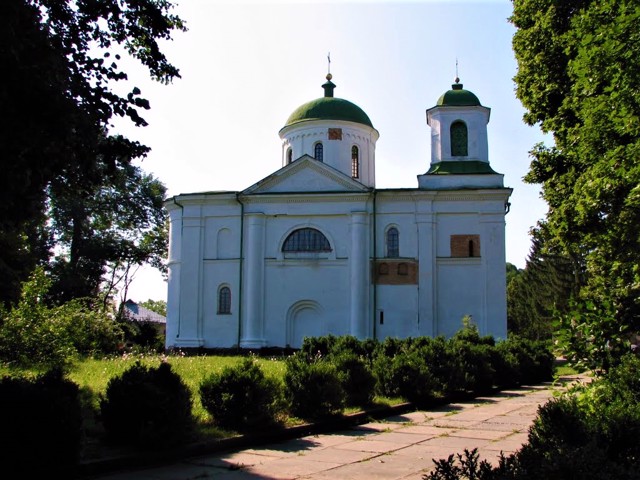
Assumption Cathedral
Temple , Architecture
Assumption Cathedral was built in Kaniv in 1144 by Prince Vsevolod Olhovych. The type type of of architecture is close to the Kyiv churches - Saint Cyril’s Churchand Blessed Virgin Mary Pyrohoshcha Church.
From the year of foundation of Assumption Church, it is customary to keep the official chronicle of Kaniv, although the city existed earlier. A classic example of Byzantine architecture.
In 1185, a defense against the Polovtsy was being prepared near the walls of this temple after the unsuccessful campaign of Prince Ihor Svyatoslavych of Novhorod-Siverskyi. In 1587, Cossack leader Ivan Podkova, who was executed in Lviv, was buried here. Destroyed by the Turks in the 17th century, the temple was restored in 1805, and in 1861, a funeral procession with the ashes of the poet Taras Shevchenko, brought from St. Petersburg, left for Chernecha Hill.
In 2024, by court decision, the thousand-year-old Assumption Cathedral in Kaniv, which had been illegally used by the Moscow Patriarchate for over 20 years, was returned to state ownership with subsequent transfer to the operational management of the Shevchenko National Reserve.
The nearby building of the former Basilian school now houses the Museum of Folk Decorative Art, which previously occupied the premises of the church.
Nearby, there is a monument to Saint Makarius Kanivsky, who was the abbot of the Kaniv monastery in the 17th century and died during the Turkish invasion.
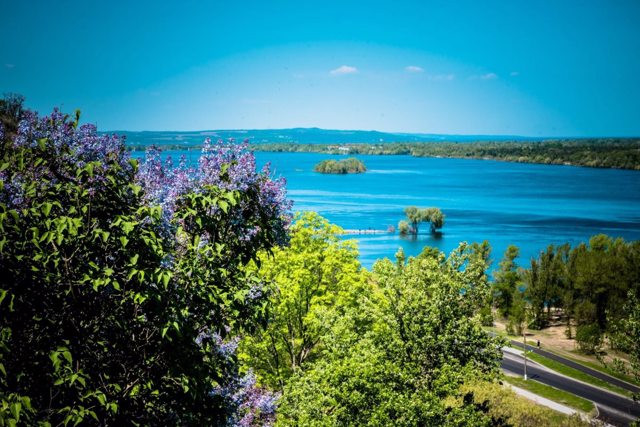
Chernecha (Taras) Hill
Historic area , Park / garden
Chernecha Hill in Kaniv is one of the highest Kaniv mountains (244 meters) on the high right bank of the Dnipro, the burial place of the Ukrainian poet-prophet Taras Shevchenko.
According to folk tales, in the 11th and 12th centuries, on the slopes of Chernecha Hill in the Monastyrok tract, there was a cave monastery of Kaniv, where monks (ukr. – chentsi) secluded themselves, which is where the name of the mountain comes from.
During Cossack times, the Holy Intercession Monastery, known since 1702, was located here.
The poet Taras Shevchenko planned to buy a plot of land for his own estate on Chernecha Hill shortly before his death in 1961, after seeing these places during his last visit to Ukraine. Here he was reburied at the request of the public, according to the will. Since then, Chernecha Hill has been called Taras Hill (Tarasova Hora).
Now it is a memorial park, the central element of which is a monument to Taras Shevchenko, erected over his grave in 1939. This bronze monument by the sculptor Matvyi Manizer is considered the highest monument to Shevchenko in Ukraine - 17 meters. There is an observation deck near the monument, which offers a wide panorama of the Dnipro.
From the pier and parking lot at the foot of the mountain, a granite staircase with 392 steps leads to its top, with recreation areas and the "Lilium" fountain (1977, architect Anatoly Moshenskyi).
The landscape park on Chernecha Hill with an area of 45 hectares is a component of the Shevchenko National Reserve "Taras Hill".
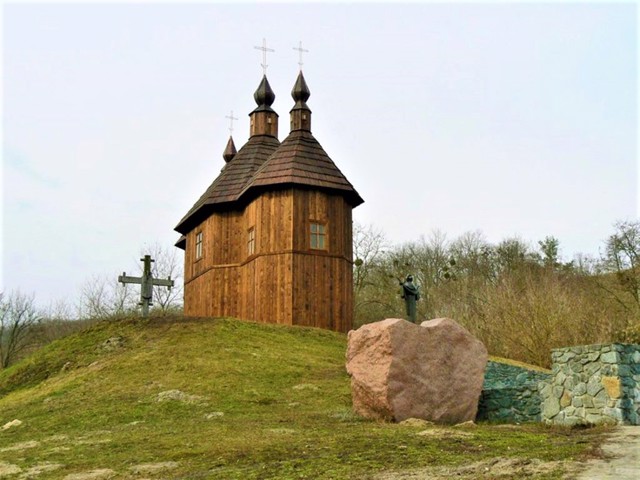
Church of Intercession of Holy Virgin
Temple , Architecture
The wooden Cossack Church of the Intercession of the Holy Virgin in the Monastyrok tract at the foot of Taras (Chernecha) Hill in Kaniv was restored in 2014 for the 200th anniversary of the birth of Taras Shevchenko.
The Church of the Intercession existed on this site in the 17th and 18th centuries. It was the spiritual center of the Kaniv Holy Intercession Orthodox Monastery, which gave the name to the tract and Chernecha Hill. The monastery was destroyed by the Poles in 1776, but the Greek Catholics preserved the church and moved it to the Assumption Cathedral, which was destroyed at that time. There he was painted by the outstanding French artist Jean-Henri Muntz. Muntz's drawing became the basis of the project of reconstruction of the Church of the Intercession. It is also called the Tarasov Church.
There is a Cossack memorial in front of the church.
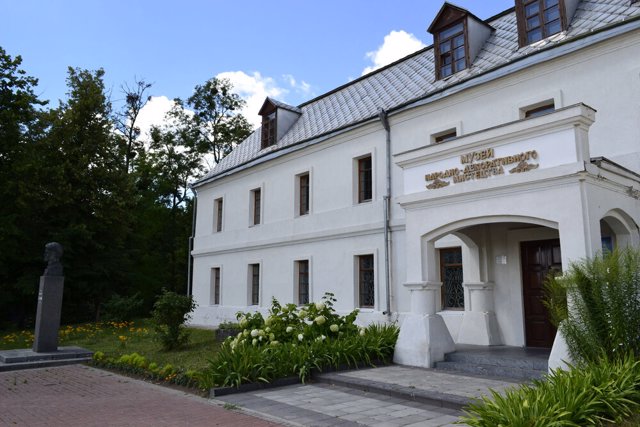
Folk Decorative Art Museum
Museum / gallery , Architecture
The Museum of Folk Decorative Art is located in Kaniv in the two-story building of the former Basilian school, founded in 1781 by the Uniate priest Bonifatiy Fizykevych at the expense of Count Stanislav Ponyatovsky, who owned the city at the time.
The school was closed in 1838. In the future, the building was also used for its intended purpose as a school. The second floor was built during Soviet times.
In 1990, the Museum of Folk Decorative Art, which was previously located in the neighboring building of the Assumption Cathedral, moved to this premises.
The museum has more than 5,000 exhibits: a collection of glass from the XIII-XVI centuries, wood products, paintings. There is a collection of samples of traditional Ukrainian clothing and household items of the three central regions - Cherkasy, Kyiv and Poltava. In particular, the primitivist works of the People's Artist of Ukraine Mariya Prymachenko, the unique embroidery of the artist Svitlana Ustymenko, and others are presented.
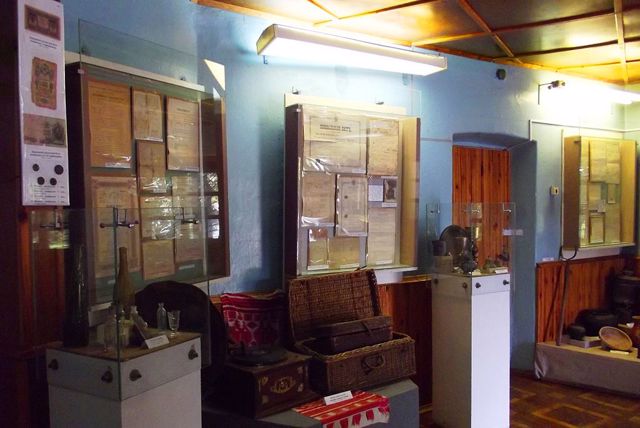
Kaniv Historical Museum
Museum / gallery
The decision to create a historical museum in Kaniv was made in 1963, but it was actually opened only 28 years later. It is located in an old building in the center of the city.
The first exposition was dedicated to the Trypillia culture, the next - the history of the Kaniv region from the Paleolithic to the Ancient Rus state.
The permanent exhibition "Antiquities of Kaniv" with ethnographic material of the 19th century, several thematic exhibitions have also been opened.
Kaniv on photo and video
Reviews Kaniv
Geographical information about Kaniv
| {{itemKey}} | {{itemValue}} |
|---|---|
| Region |
Cherkasy |

